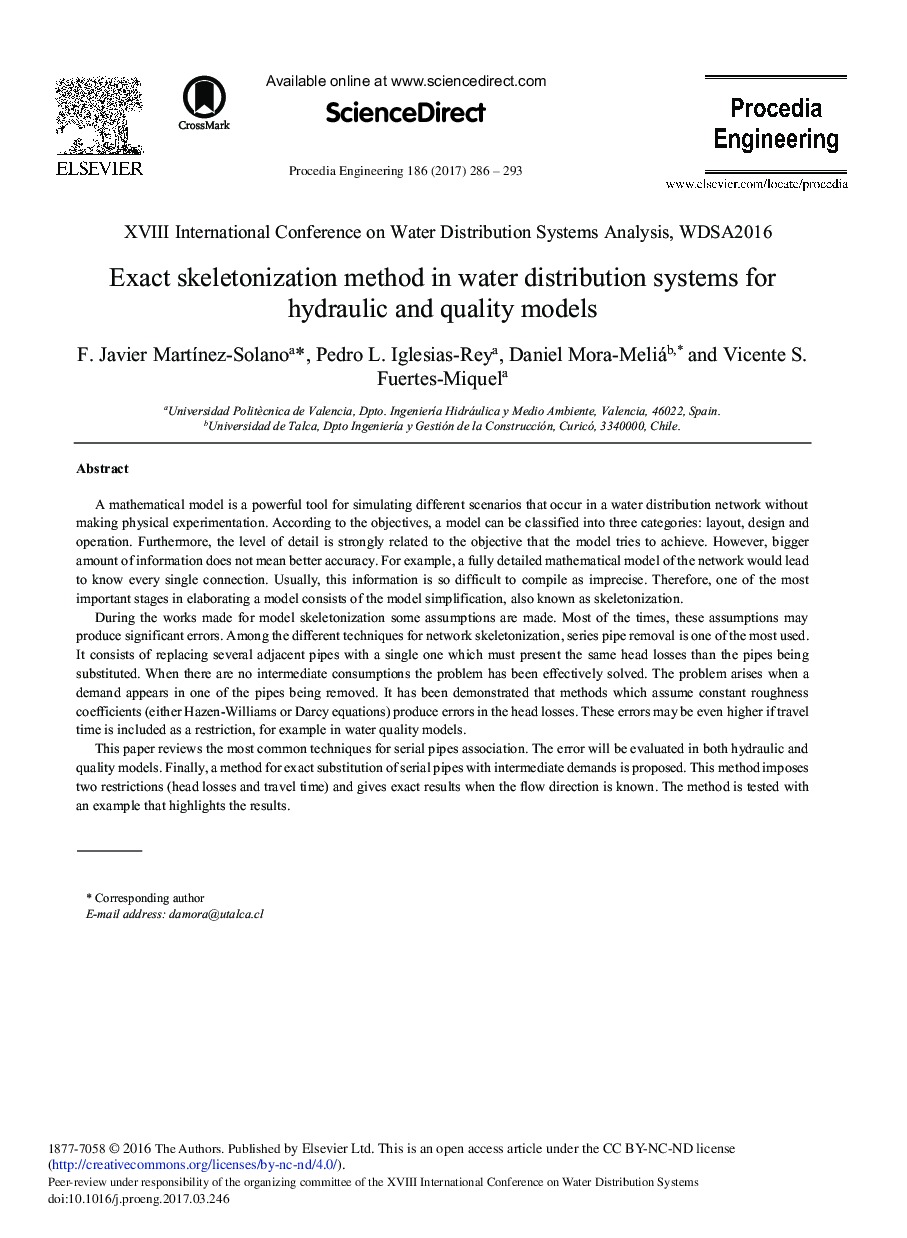| Article ID | Journal | Published Year | Pages | File Type |
|---|---|---|---|---|
| 5028219 | Procedia Engineering | 2017 | 8 Pages |
A mathematical model is a powerful tool for simulating different scenarios that occur in a water distribution network without making physical experimentation. According to the objectives, a model can be classified into three categories: layout, design and operation. Furthermore, the level of detail is strongly related to the objective that the model tries to achieve. However, bigger amount of information does not mean better accuracy. For example, a fully detailed mathematical model of the network would lead to know every single connection. Usually, this information is so difficult to compile as imprecise. Therefore, one of the most important stages in elaborating a model consists of the model simplification, also known as skeletonization.During the works made for model skeletonization some assumptions are made. Most of the times, these assumptions may produce significant errors. Among the different techniques for network skeletonization, series pipe removal is one of the most used. It consists of replacing several adjacent pipes with a single one which must present the same head losses than the pipes being substituted. When there are no intermediate consumptions the problem has been effectively solved. The problem arises when a demand appears in one of the pipes being removed. It has been demonstrated that methods which assume constant roughness coefficients (either Hazen-Williams or Darcy equations) produce errors in the head losses. These errors may be even higher if travel time is included as a restriction, for example in water quality models.This paper reviews the most common techniques for serial pipes association. The error will be evaluated in both hydraulic and quality models. Finally, a method for exact substitution of serial pipes with intermediate demands is proposed. This method imposes two restrictions (head losses and travel time) and gives exact results when the flow direction is known. The method is tested with an example that highlights the results.
